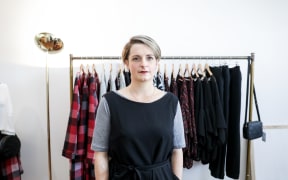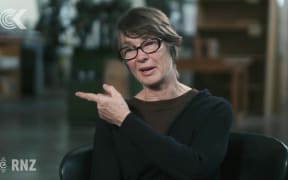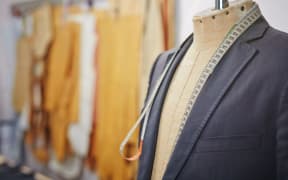Local fashion designers are hopeful the closure of New Zealand's two largest high-end fashion fabric providers - Charles Parsons and Cooper Watkinson Textiles - will help pave the way for greater transparency within the industry.
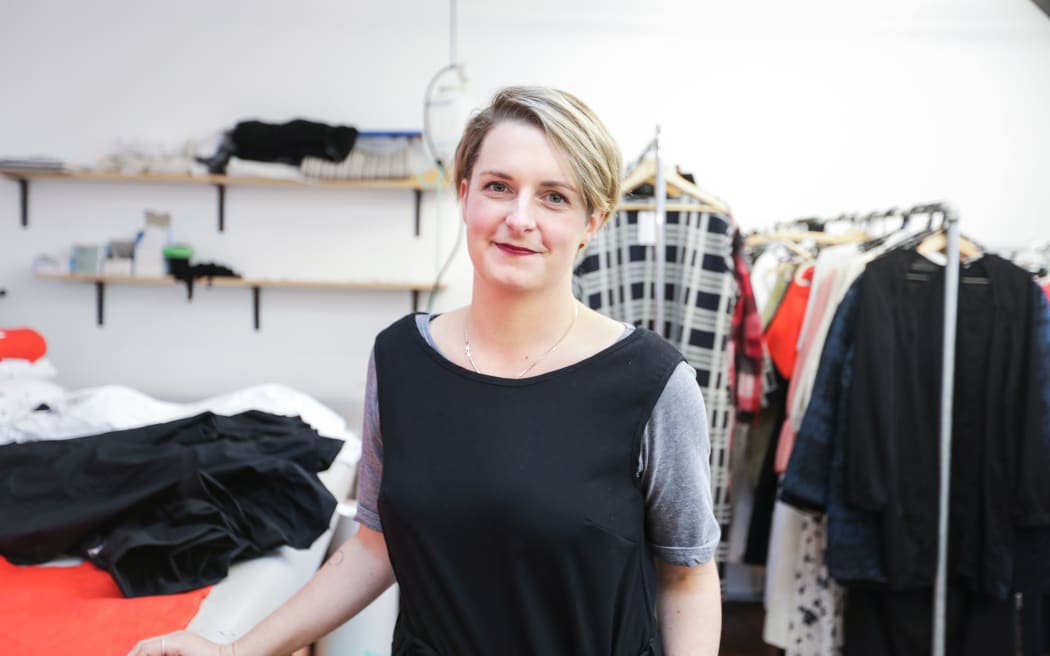
Jessica Matthews from Aida Maeby. Photo: RNZ / Rebekah Parsons-King
Wellington designer Jessica Matthews from label Aida Maeby said there was a growing demand from customers to know where their clothing came from.
She said it was easier to build relationships with smaller wholesalers, who often had a hand in sourcing the fabric directly - compared with larger companies who distributed through stores and sales agents.
"There's just a few less middle men in there. They can tell you where something came from, sometimes under what conditions it was made which is really important to me because I get asked that all the time... and so much of the time I just don't know and I wish I knew."
Ms Matthews said she asked her Charles Parsons sales representative for supply chain information, but could not get it.
"They said that information is impossible to get, which is patently untrue, and said why would anyone want to know that?
"I asked for more information and they basically just said no... so if the conversation stops between me and my wholesaler none of that information ever gets out and I have to assume it's because the answer would be bad."
But, Charles Parsons product development manager Jane Simmertino said the company did know and it was confident all fabrics were sourced ethically and the manufacturing process met high environmental and legal standards.
"It does sound like a breakdown in communication and that's something I will address with our team here... we absolutely know where our fabric comes from," she said.
"We travel there several times a year so we're eyes to the ground, we're in the factories, we're in the dye houses so we actually see where our product is being made. There's no wool over our eyes."
Ms Simmertino said supply chain information was not shared with customers due to commercial sensitivity.
Tearfund's latest ethical fashion report showed only 7 percent of designers knew where the raw materials their fabric is made out of comes from and under what conditions it was made.
Its project manger Claire Hart said only seven New Zealand-based companies were able to provide a list of all their suppliers.
She said getting a supplier list took time.
"It is a long process and companies do start from square one, they have to find the factories then they have to build a relationship so that they will then be happy to disclose their suppliers and on and on.
"It is a process that we need to give companies a bit of grace on, but something all of them should be starting on," she said.
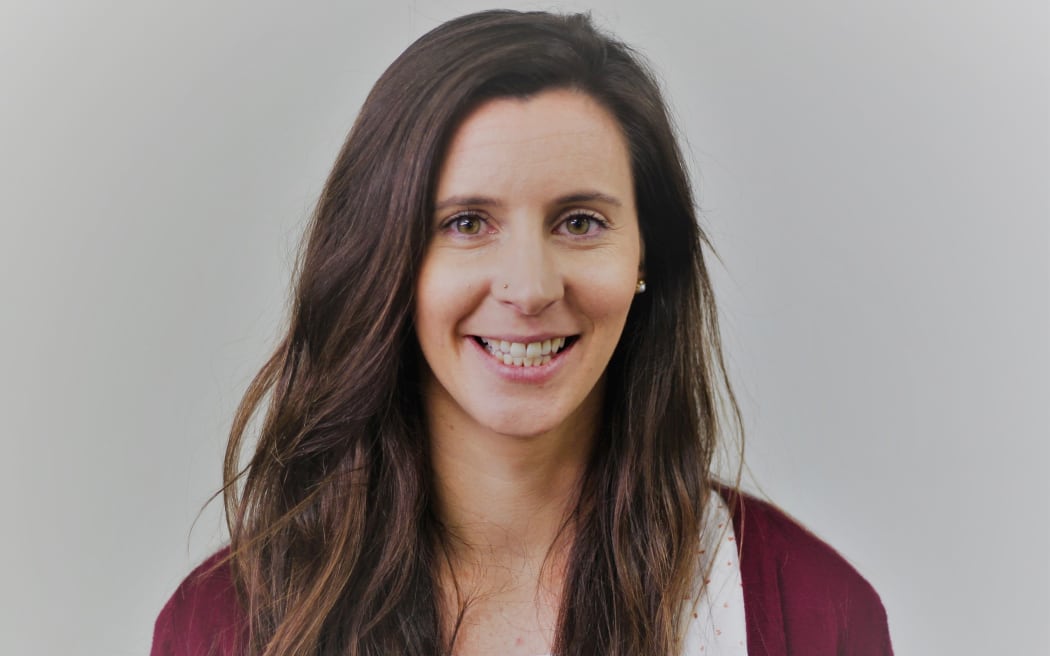
Claire Hart from Tearfund. Photo: Supplied.
Ms Hart said one way designers could know for sure was to visit overseas farms, factories and mills.
This is what Wellington brand Kowtow does. They visit their suppliers in India twice a year to see for themselves the conditions their fabric is made in and meet the people making it.
Creative operations head Emma Wallace said the information was there - it was just costly and time-consuming to get.
"It's not that it's a secret it just takes time and energy to actually do it."
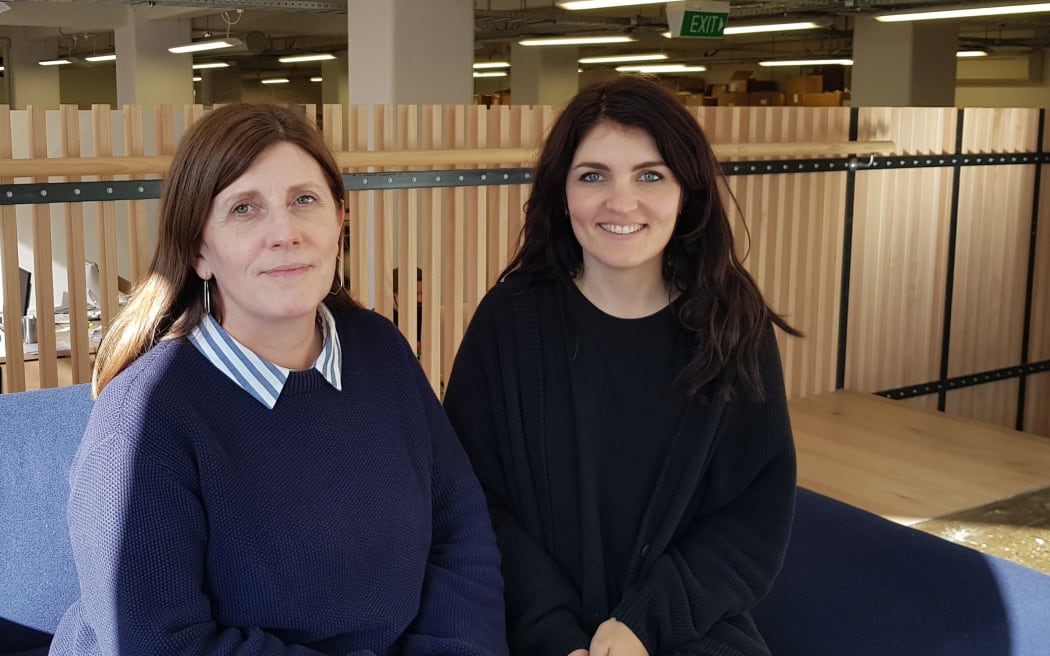
Kowtow's head of operations Emma Wallace and production manager Tessa Bradley. Photo: RNZ / Emma Hatton
Ms Wallace said the industry would be receptive.
"There's a lot of awareness around where people's food and clothes are coming from, so the industry is prepared for people to start asking those questions."
Fashion Merchants director Richard Nieper agreed and said more of his customers were asking about where his fabrics had been sourced from.
"I know where all my fabrics are made and designers are welcome to ask," he said.
Ms Hart said achieving transparency would be a mixture of legislative change and consumer-driven demand.
She said a fashion council, who could speak on behalf of the industry, would help.
"That's ultimately how we're going to solve these issues, if everybody comes together and an industry body can provide a forum for that to happen - we don't have that in New Zealand at the moment.
"Companies see each other as competitors mostly and it would be awesome to have a space where you could lay that at the door and come together to look at the common issues facing all companies."

